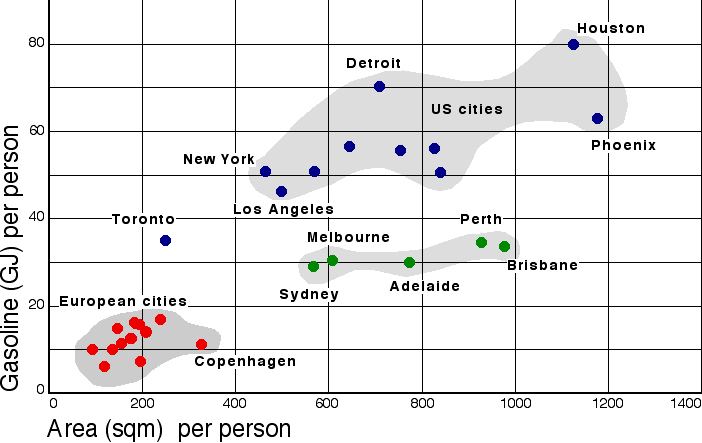 | ||
Urban density is a term used in urban planning and urban design to refer to the number of people inhabiting a given urbanized area. As such it is to be distinguished from other measures of population density. Urban density is considered an important factor in understanding how cities function. Research related to urban density occurs across diverse areas, including economics, health, innovation, psychology and geography as well as sustainability.
Contents
Sustainability
It is commonly asserted that higher density cities are more sustainable than low density cities. Much urban planning theory, particularly in North America, the UK, Australia and New Zealand has been developed premised on raising urban densities, such as New Urbanism, Transit-oriented development, and Smart growth.
However, the link between urban density and aspects of sustainability remains a contested area of planning theory. Jan Gehl, prominent Urban Designer and expert on sustainable urbanism, argues that low-density, dispersed cities are unsustainable as they are automobile dependent. A minority, such as Randy O'Toole of the Libertarian Cato Institute, counter that raising densities results in more expensive real estate, greater road congestion and more localized air pollution. Others counter that traffic congestion is a result not of population density but of parking capacity. At a broader level, there is evidence to indicate a strong negative correlation between the total energy consumption of a city and its overall urban density, i.e. the lower the density, the more energy consumed.
Measurement
Urban density is a very specific measurement of the population of an urbanized area, excluding non-urban land-uses. Non-urban uses include regional open space, agriculture and water-bodies.
There are a variety of other ways of measuring the density of urban areas:
